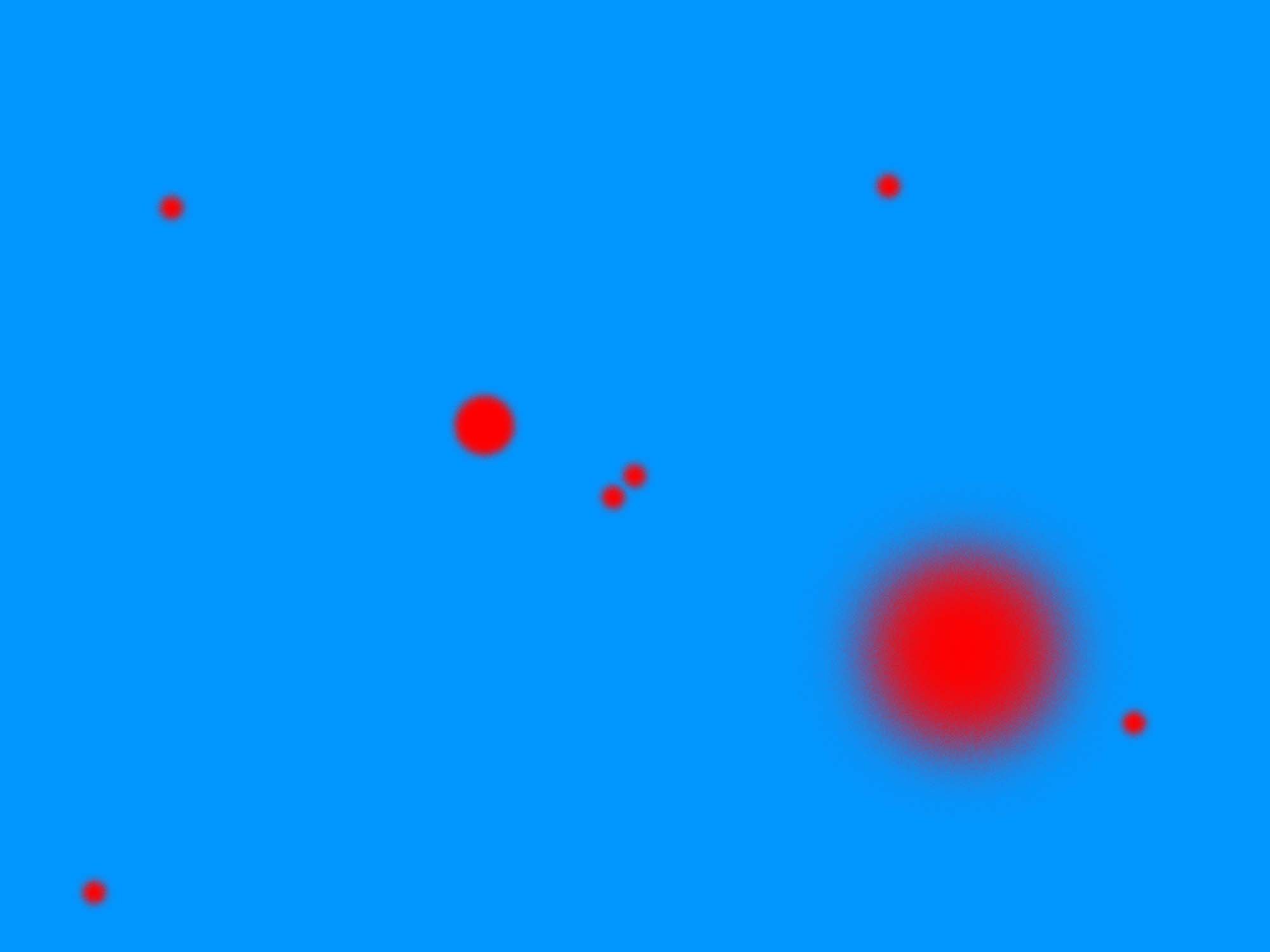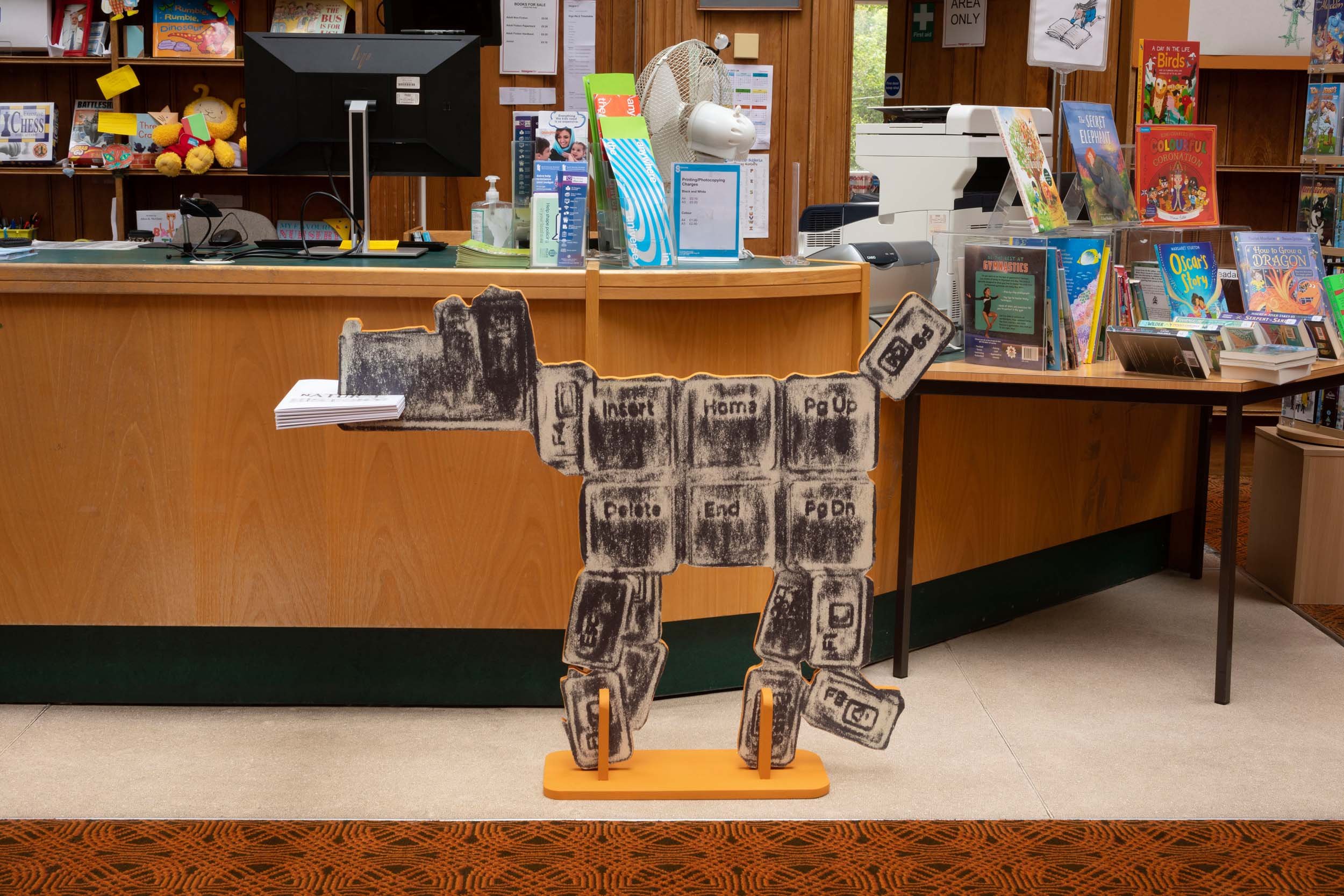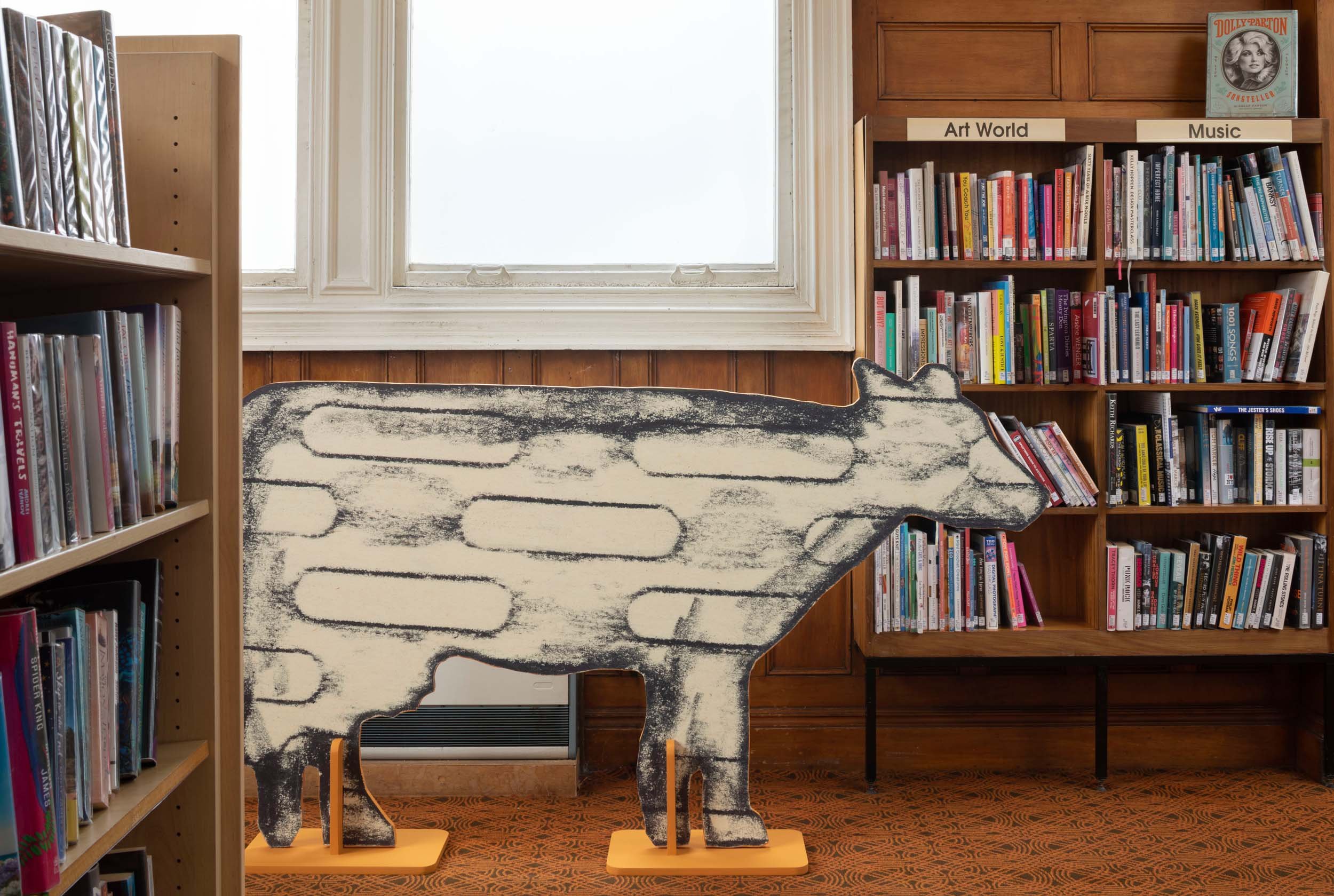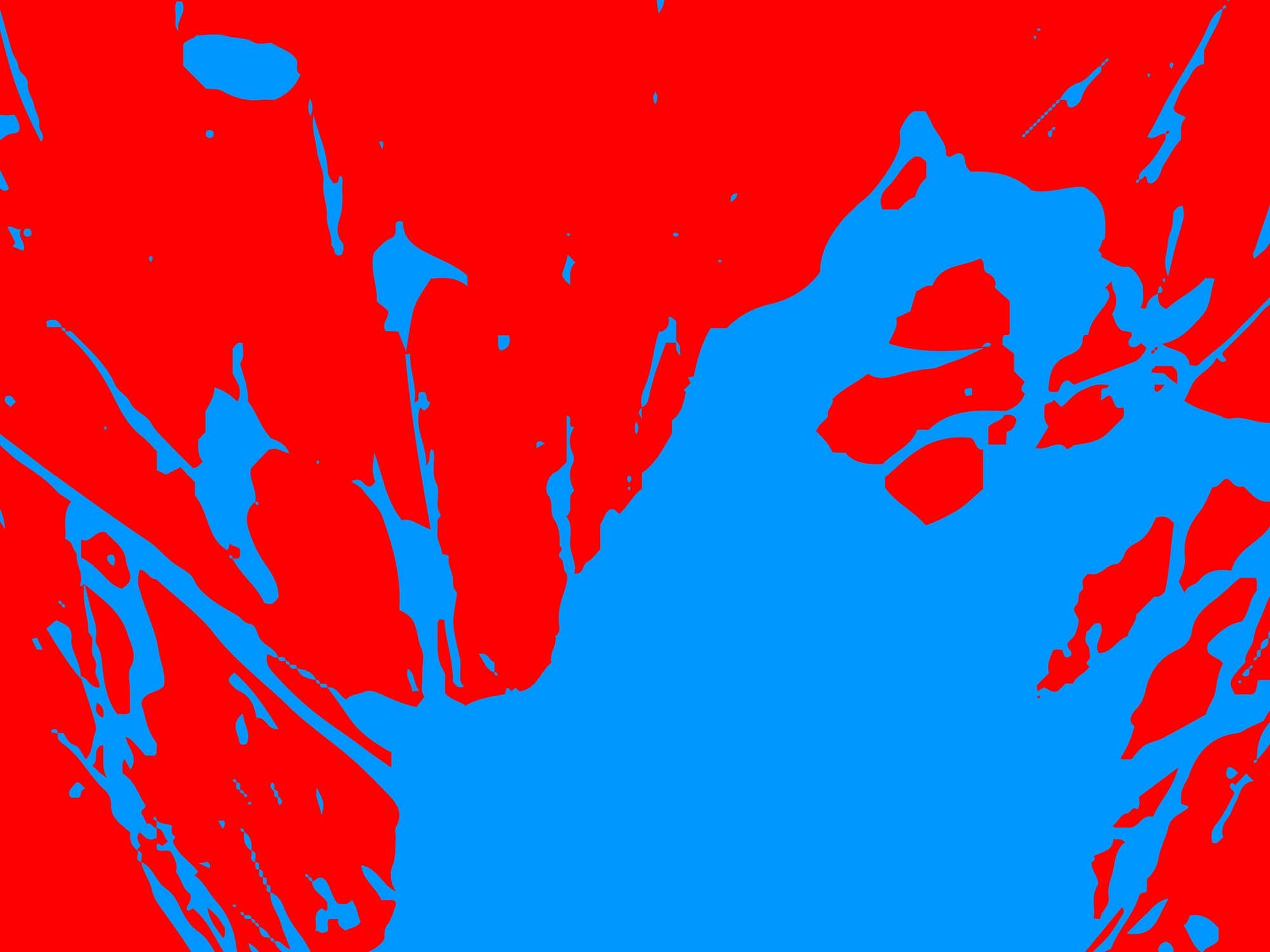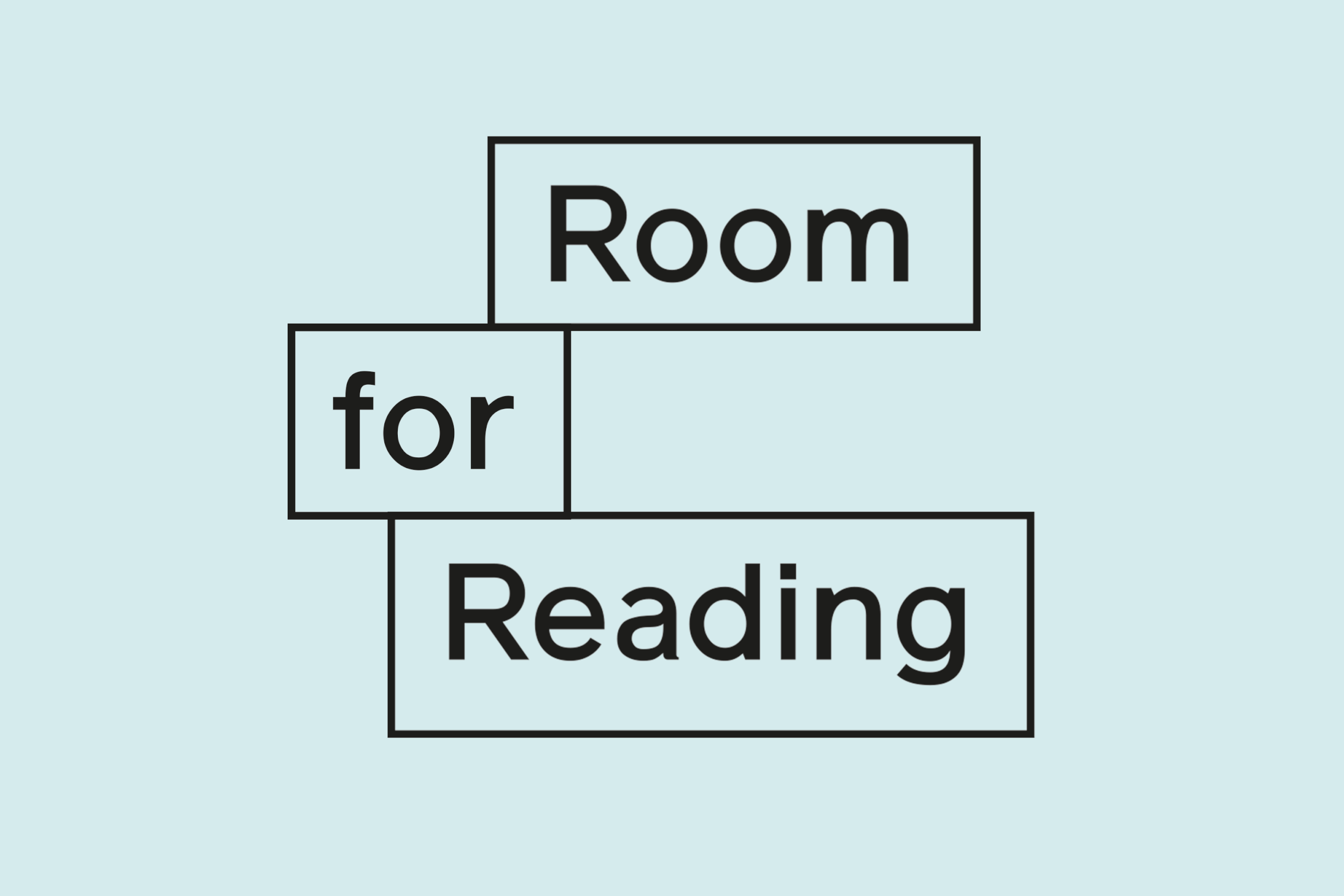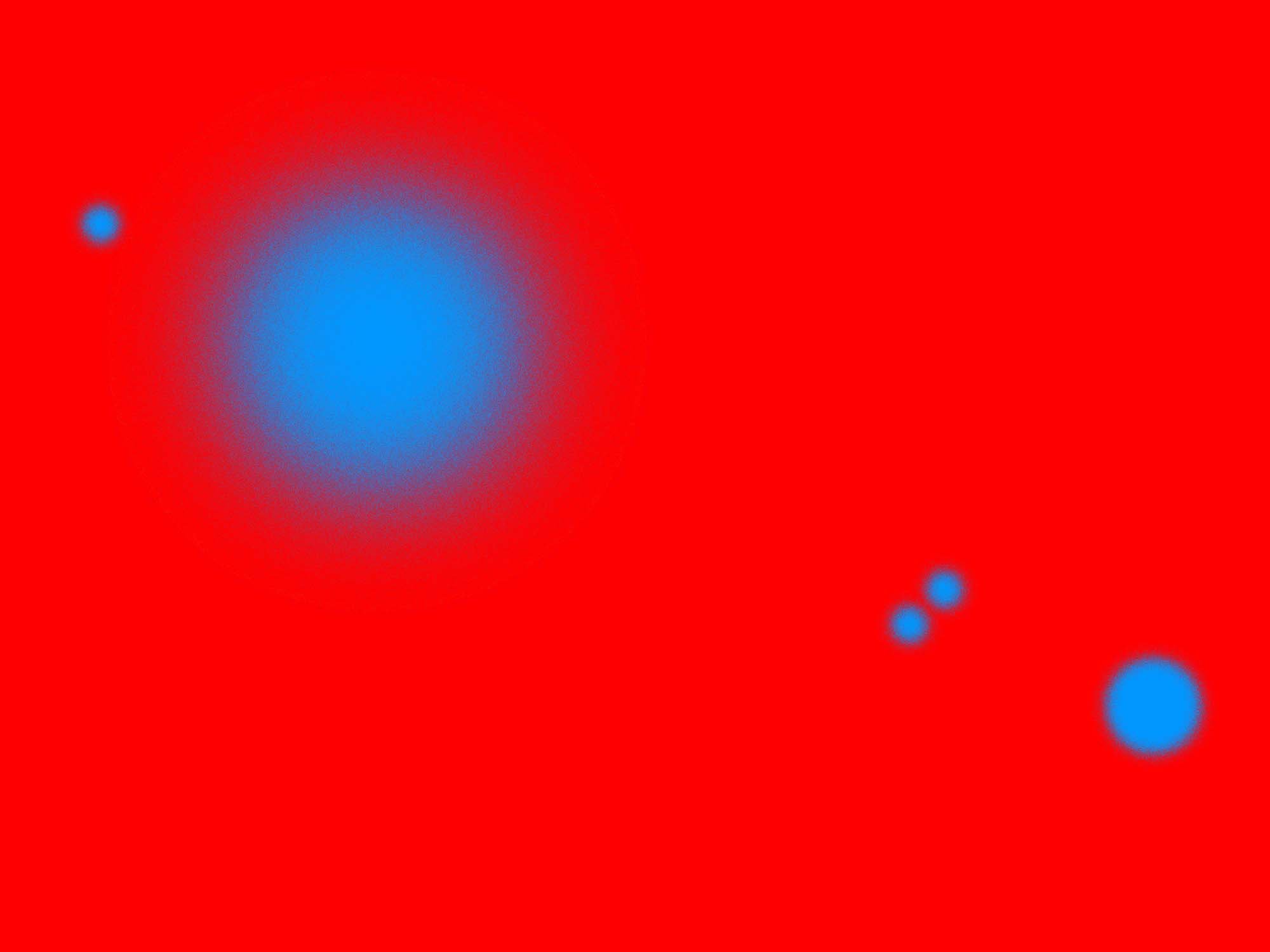Design: Tom Joyes
Kate Davis has made a series of drawings that employ ‘frottage’ techniques. The frottages (or crayon rubbings) are taken from the interior and exterior of her local library in Pollokshields. These drawings are presented as a limited edition artist’s book which is freely available to anyone visiting Pollokshields library.
Kate Davis, ‘Natural History’, Pollokshields Library, 2023. Courtesy of the artist. Photo: Ruth Clark.
Davis’ frottage drawings take direct visual inspiration from the Surrealist artist Max Ernst (1891–1976) who further developed the method in 1925. Ernst published a collection of his own frottage drawings in 1926, titled ‘Histoire Naturelle’ (Natural History), and several of these depict animal forms. Other thematic starting points for Davis’ own ‘Natural History’ are Deborah Levy’s 2021 book ‘Real Estate’ and a 1973 small press publication, ‘An Intelligent Woman's Guide to Dirty Words: Volume One of the Feminist English Dictionary’, which includes a chapter of “woman as animal” idioms.
The term “high horse”, which is reclaimed in Levy’s book, provides a key motif in Davis’ new work. The Feminist English Dictionary offers further animal metaphors which are given form by Davis here.
Max Ernst described frottage as a means of making the unseen “visible” . This idea extends Davis’ interest in reconsidering histories and representations which are often absent, overlooked, or perhaps hiding in plain sight. Focusing on the library as a site for exploring language, ‘Natural History’ seeks to question how familiar phrases might be unpicked and reimagined.
Davis has also worked with children from Pollokshields Primary School to create their own fantastical creatures and imaginary beasts using collage and frottage drawing techniques. Their artworks will be on display at Pollokshields library.
‘Natural History’ was accompanied by a short piece of writing by author and journalist Charlotte Higgins. Higgins’ writing was available from Pollokshields Library for the duration of the project and is included in the publication ‘anywhere in the universe’, available to buy in our Shop.
Kate Davis (b. New Zealand, lives and works in Glasgow) works across film/video, drawing, printmaking, installation and bookworks. Questioning how to bear witness to the complexities of the past, Davis’ artwork is an attempt to reconsider what certain histories could look, sound and feel like.
Solo exhibitions include: Neuer Aachener Kunstverein, Aachen; A-M-G5 at 20 Albert Road, Glasgow; LUX, London; Stills, Edinburgh; Dunedin Public Art Gallery, New Zealand; The Drawing Room, London; Temporary Gallery, Cologne; GoMA, Glasgow; Galerie Kamm, Berlin; Museo de la Ciudad and La Galeria de Comercio, Mexico; Tate Britain, London; and Kunsthalle Basel amongst others.
Recent group exhibitions and screenings awards include: ‘Termite Tapeworm Fungus Moss’, CCA Glasgow; ‘Chips and Egg’, The Sunday Painter, London; 35th Kassel Documentary Film and Video Festival; ‘Class Reunion’, MUMOK, Vienna; ‘A Slice Through the World: Contemporary Artists’ Drawings’, Modern Art Oxford; ‘The Driver’s Seat’, Cubitt Gallery, London; The Margaret Tait Award 2016/17; Cinenova Presents ‘Now Showing’, LUX Cornwall; LUX/ BBC Artists and Archive commission; ‘GENERATION’, Scottish National Gallery of Modern Art; ‘HOUSE WORK CASTLE MILK WOMAN HOUSE’, Glasgow Women’s Library; ‘Art Under Attack’, Tate Britain; ‘The End of the Line: Attitudes in Drawing’, Hayward Touring Exhibition; ‘Art Sheffield 10’ (collaborative commission with Jimmy Robert); and ‘Das Gespinst’, Stadtisches Museum Abteiberg, Monchengladbach.
Charlotte Higgins is the chief culture writer of the Guardian. She writes a regular column for the Opinion pages; articles for the Long Read section; and also contributes arts features, book reviews and magazine articles.
As an author, most of her books are about the classical world: ‘Under Another Sky’ (2013) was shortlisted for the Samuel Johnson (now Baillie Gifford) prize, among other awards, and has been adapted into a play by David Greig; ‘Red Thread’ (2018) won the Arnold Bennett prize and was a BBC Radio 4 Book of the Week. Her latest, ‘Greek Myths’, with illustrations by Chris Ofili, was shortlisted for the Waterstones book of the year 2021. A further book, This New Noise (2015) was adapted from a series of Guardian essays about the BBC.
Born in the Potteries, Charlotte is a fellow of the Society of Antiquaries, a former winner of the Classical Association Prize, and a trustee of the British School at Rome.
About the Library
Pollokshields Library was designed by architect Thomas Gilmour and officially opened on the 20th of February 1907 by Sir John Stirling Maxwell. The library was built with money from Andrew Carnegie, in an Edwardian Baroque style. On the outside of the building, three plaques inscribed with ‘The Arts’, ‘History’ and ‘Literature’ sit below large, arched windows.
Project Details
Location
Pollokshields Library
30 Leslie Street, Glasgow G41 2LF
Google Map
Transport Links: Pollokshields East Station
Access
Pollokshields Library is wheelchair accessible. Accessible toilets are available.
Thanks
Kate Davis would like to thank: Effie Flood, Alison Nicol and all the staff at Pollokshields Library; Charlie Hammond, Patrick Jameson, Andrew Lee, Deborah Levy, Mara the Storyteller, Katherine Mackinnon, Dominic Paterson, Yvonne Quirmbach, and Jonny Lyons.
